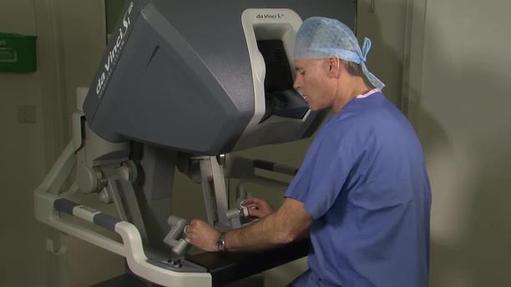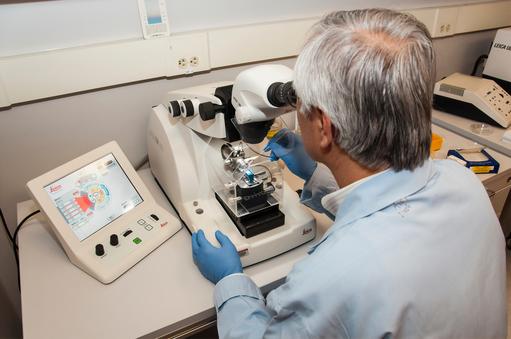Tag
Directory:
Tags:

|
In 2013, a new surgical procedure was used for first time in the UK at St George's Hospital, London to remove of a cancerous kidney tumour.
The procedure combines the da Vinci surgical system with an injection of a dye into the patient's kidney. The dye illuminates healthy tissue and shows up under the da Vinci's camera as a bright green light and as a consequence the procedure is called Firefly. Chris Anderson, a consultant urologist at St George's is one of the early adopters of robotic surgical techniques after receiving specialist training in 2005 at the world renowned Henry Ford Robotic Center in Detroit. Anderson has built-up a leading renal cancer unit at St George's and introduced the Firefly technology into the UK. He says, "Partial kidney removal is a complex operation that requires complete removal of the tumour and reconstruction of the remaining healthy kidney. By combining the da Vinci system with Firefly we are able to achieve our goal better than in the past". Robotic surgery Kidney surgery is enhanced by robotics. In recognition of the increasing importance of high tech surgical therapies, the N Sethia Foundation funded the UK's first robotic surgery training centre at University College Hospital, London. In pride of place in the new Chitra Sethia Centre for Robotics and Minimal Access Surgery is the latest da Vinci surgical system. |
|
|
|
|
Directory:
Tags:

|
Prostate cancer develops in the walnut-sized gland underneath the male bladder. It is the most common cancer, other than skin cancer and is the second leading cause of cancer-related death in men.
The disease, which often develops slowly, is different to most other cancers because small areas of cancer within the prostate are common, especially in older men and may not grow or cause any problems. This presents men diagnosed with prostate cancer with some extremely difficult choices. The statistics Prostate cancer is the second most frequently diagnosed cancer in men and the fifth most common cancer overall. One in six men will be diagnosed with the disease in their lifetime and the overwhelming majority of cases occur in wealthy countries. Each year, about 37,000 men in the UK and some 210,000 men in the US are diagnosed with prostate cancer and more than 10,000 and 28,000 respectively die each year of the disease. In the US there are over two million men living with the disease and African American men have a higher incidence of prostate cancer and double the mortality rate compared with other racial and ethnic groups. In the US about US$10 billion is spent annually on treatments for the disease. Standard treatments Traditional treatments to stop the spread of prostate cancer involve surgery and radiotherapy, which has significant side effects. Following such treatments 50% of patients experience impotence, up to 20% suffer incontinence and between one and five percent who receive radiotherapy experience pain and bleeding. |
|
|
This has four arms which hold the operating instruments and the camera. These follow the commands of the surgeon. Supporting surgical team members assist in installing the proper instruments, prepare the 1-cm ports in the patient, as well as supervise the laparoscopic arms and tools being utilized.
Why is it better for the surgeon?
With its 3-D view, the da Vinci Surgical System aids the surgeon to more easily identify vital anatomy such as the delicate nerves and blood vessels surrounding specific anatomy
The EndoWrist® Instruments provide the surgeon with the dexterity not available using conventional laparoscopic instruments to perform a delicate and precise surgical dissection, reconstruction or removal of specific tissue.
The benefits of this minimally invasive surgery are significant to patients.
- Reduced trauma to the body
- Less blood loss and need for transfusions
- Less post-operative pain and discomfort
- Minimal need for pain killers
- Shorter hospital stay




